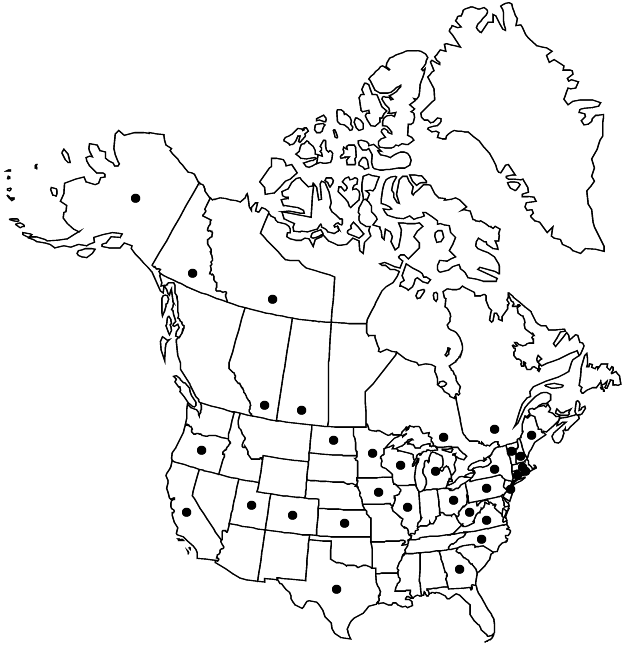Gypsophila elegans
Fl. Taur.-Caucas. 1: 319. 1808.
Plants annual. Stems erect, simple or few-branched proximal to inflorescence, 0.4–6 dm, glabrous. Leaves cauline, proximal leaves with clasping bases, gradually transitional to distal leaves with ± rounded bases; blade linear-lanceolate to narrowly oblong, 1.5–7 cm × (1–)3–16 mm, apex obtuse to acute in proximal leaves, acute in distal leaves, glaucous. Pedicels 10–35 mm, glabrous. Flowers: calyx 2.5–5 mm, lobes glabrous, apex obtuse or mucronate; petals white, occasionally with pinkish purple veins, or rarely pink, 6–15 mm. Capsules globose. Seed coats coarsely tuberculate. 2n = 34 (Europe).
Phenology: Flowering summer–early fall.
Habitat: Roadsides and other open, sandy or rocky, disturbed sites
Elevation: 0-2100 m
Distribution

Introduced; Alta., N.W.T., Ont., Que., Sask., Yukon, Alaska, Calif., Colo., Conn., Ga., Ill., Iowa, Kans., Maine, Mass., Mich., Minn., N.H., N.J., N.Y., N.C., N.Dak., Ohio, Oreg., Pa., R.I., Tex., Utah, Vt., Va., W.Va., Wis., Eurasia, introduced in the West Indies (Dominican Republic), Central America (Guatemala), widely cultivated elsewhere.
Discussion
Gypsophila elegans is frequently included in mixtures of “wildflower” seeds used for roadside planting and other revegetation projects. A specimen specifically from such a mixture was seen from Louisiana, but such mixtures are used widely elsewhere and are believed to account for the presence of this species in Colorado and in at least one Utah locality. A report of this species from Labrador appears to have been based on garden plants.
If Gypsophila elegans is divided into two varieties, following Y. I. Barkoudah (1962), plants in the flora area are var. elegans. Cultivars are much used by florists and are frequently grown as garden ornamentals. These may have supernumerary petals, petals to 25 mm, and/or pink to maroon petals.
Selected References
None.